Updates
Régimen nicaragüense publica fotos del obispo Álvarez
Por David Agren, OSV News
EE.UU. exige la liberación del obispo y otros clérigos encarcelados.
CIUDAD DE MÉXICO (OSV News) — El Departamento de Estado de EE.UU. exigió la liberación del obispo Rolando Álvarez de Matagalpa y otros líderes religiosos nicaragüenses encarcelados luego de una ola de detenciones contra el clero católico durante la temporada navideña.
La declaración del 2 de enero describió al obispo Álvarez y a los demás líderes religiosos, incluido el obispo Isidoro Mora de Siuna, como “injustamente detenidos” y deploró las condiciones en las que se encontraban detenidos. El obispo Álvarez lleva más de 500 días detenido.
“Las autoridades nicaragüenses han mantenido al obispo Álvarez en aislamiento, han bloqueado una evaluación independiente de las condiciones de su encarcelamiento y han publicado vídeos y fotografías montados que sólo aumentan las preocupaciones sobre su bienestar”, se lee en la declaración, firmada por el portavoz del Departamento de Estado, Matthew Miller.
El régimen del presidente Daniel Ortega y su esposa, la vicepresidenta Rosario Murillo, “continúa imponiendo severas restricciones a las comunidades religiosas y negando a los ciudadanos nicaragüenses la posibilidad de practicar libremente sus religiones y expresar sus creencias. Una vez más hacemos un llamado al gobierno de Nicaragua para que libere al obispo Rolando Álvarez de forma inmediata y sin condiciones”.
En una publicación separada en la plataforma de redes sociales X, anteriormente conocida como Twitter, Miller calificó la detención del obispo Álvarez como “inconcebible”, y agregó, “la libertad de creencia es un derecho humano”.
Al menos 13 sacerdotes, la mayoría en la Arquidiócesis de Managua, fueron detenidos entre el 26 y el 31 de diciembre, según la abogada nicaragüense exiliada Martha Molina, que ha estado siguiendo los ataques a la Iglesia católica en Nicaragua. Muchos fueron sacados de sus residencias parroquiales por la policía y los paramilitares.
El gobierno nicaragüense, aparentemente en respuesta a la declaración de Estados Unidos, publicó fotos el 2 de enero del obispo Álvarez recibiendo atención médica de un médico de la prisión.
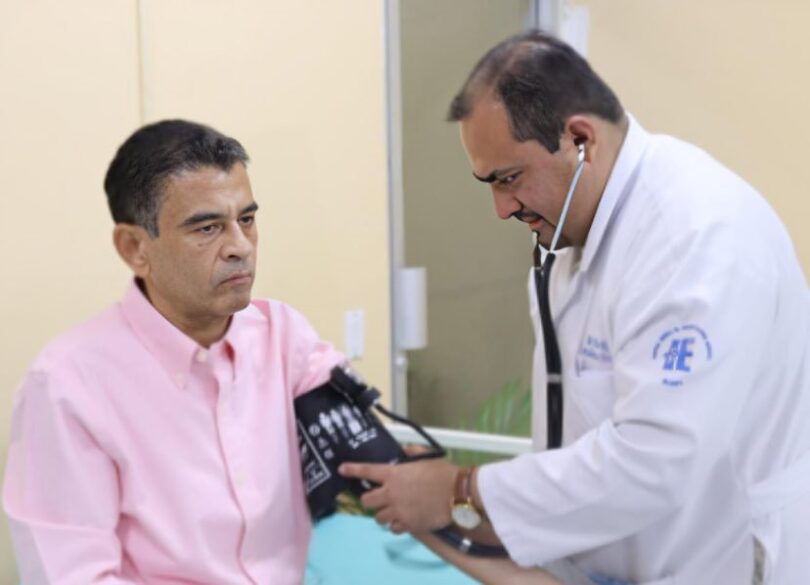
Vestido con una camisa de vestir rosada y pantalones grises, el obispo Álvarez parecía pálido y demacrado mientras un médico le tomaba la presión y le realizaba unas pruebas. Un comunicado del gobierno afirmó que “los signos vitales (del obispo) están bien” después de haber sido examinado por un especialista en medicina interna.
El gobierno ha publicado fotos del obispo Álvarez de vez en cuando – siendo visitado por sus hermanos o recibiendo atención médica –, pero se desconoce su estado de salud.
Observadores han expresado su preocupación por el bienestar de los sacerdotes arrestados, cuya condición de detenidos sigue sin conocerse. Bianca Jagger, activista nicaragüense de derechos humanos, dijo en X que recibió información de que “uno de los sacerdotes que secuestraron fue trasladado al hospital. Exijo prueba de vida”.
El Papa Francisco expresó preocupación por Nicaragua y los sacerdotes cautivos el 1 de enero en su oración del Ángelus de Año Nuevo.
“Sigo con profunda preocupación lo que está sucediendo en Nicaragua, donde Obispos y sacerdotes han sido privados de su libertad”, dijo el Santo Padre.
El pontífice expresó su “cercanía en la oración” a los sacerdotes detenidos y a sus familiares, “y a toda la Iglesia del país”.
“Espero que se busque siempre el camino del diálogo para superar las dificultades. Recemos hoy por Nicaragua”.
El diálogo ha resultado difícil en Nicaragua, a pesar de los esfuerzos de la Iglesia por asumir un papel mediador después de que estallaron las protestas en 2018, con manifestantes que exigían la destitución del presidente Daniel Ortega y su esposa, la vicepresidenta Rosario Murillo. Los sacerdotes brindaron refugio a los protestantes y luego acompañaron a las familias de los presos políticos, incluso cuando sus parroquias estaban sitiadas por la policía y los paramilitares pro-régimen.

Los llamados a la acción sobre el caso del obispo Álvarez y el clero detenido se producen mientras el régimen aplasta incluso la más mínima disidencia en el país, que los analistas han descrito como cada vez más opresivo y totalitario.
Los clérigos del país suelen ser espiados y visitados por policías y paramilitares en actos de intimidación y para cumplir órdenes, como la suspensión de actos de piedad popular y procesiones públicas en días festivos.
Ofrecer oraciones por los encarcelados puede causar problemas al clero. El obispo Isidoro Mora fue detenido el 20 de diciembre, junto con dos seminaristas, luego de la celebración de una Misa en la ciudad de Matagalpa, donde ofreció apoyo espiritual al obispo Álvarez, el líder de la diócesis local.
El 31 de diciembre, el cardenal Leopoldo Brenes de Managua instó a orar por las “familias y comunidades que en este momento sienten la ausencia de sus sacerdotes o viven otra clase de penas”.
Molina ha contabilizado más de 770 ataques a la Iglesia católica en Nicaragua desde 2018, y 2023 registró la mayor cantidad de incidentes. Los sacerdotes previamente detenidos han sido enviados rutinariamente al exilio, salvo el obispo Álvarez, quien se ha negado a abandonar Nicaragua, a pesar de estar encarcelado.
Se desconocen los motivos de las detenciones masivas de sacerdotes. Murillo, la portavoz del gobierno, no respondió a una solicitud de comentarios.
El periodista nicaragüense exiliado Emiliano Chamorro planteó en X que el régimen podría estar presionando para un cambio en el liderazgo de la Iglesia mediante el nombramiento de obispos que considera más amigables.
Molina no descartó la teoría, pero dijo a OSV News: “No veo sacerdotes en la Iglesia Católica cómplices del régimen que puedan llegar a ser obispos”.
Molina agregó: “La dictadura puede estar preparando un destierro masivo para lograr el objetivo que se ha propuesto que es erradicar a la Iglesia Católica de Nicaragua… (Los sacerdotes) dicen la verdad y ellos no quieren escucharla”.
El biógrafo papal Austen Ivereigh escribió en X el 1 de enero que “una dictadura que suprime a la Iglesia hace que la Iglesia se fortalezca y acelera el fin de la dictadura”.
Y añadió: “Es la ley de hierro de la historia que todo dictador latinoamericano decide olvidar”.
David Agren escribe para OSV News desde la Ciudad de México.
El Vaticano publica una nueva aclaración sobre documento que aborda las bendiciones
Por Justin McLellan, Catholic News Service
CIUDAD DEL VATICANO (CNS) — Si bien los obispos pueden adoptar un enfoque cauteloso respecto al documento del Vaticano sobre la bendición de parejas del mismo sexo u otras parejas no casadas, no deben negar a sus sacerdotes la posibilidad de discernir e impartir bendiciones a las personas que lo soliciten, dijo la oficina doctrinal del Vaticano.
“La prudencia y la atención al contexto eclesial y a la cultura local podrían admitir diversos modos de aplicación, pero no una negación total o definitiva de ese paso que se está proponiendo a los sacerdotes”, dijo un comunicado de prensa emitido el 4 de enero por el Dicasterio para la Doctrina de la Fe.
Cada obispo tiene la responsabilidad de discernir la aplicación local de la declaración “Fiducia Supplicans” (“Confianza suplicante”) sobre “el sentido pastoral de las bendiciones”, firmada por el Papa Francisco y publicada por el Dicasterio para la Doctrina de la Fe el 18 de diciembre, pero un obispo no debe negar a los sacerdotes la capacidad de bendecir a las personas que acuden a ellos, dice el comunicado de prensa.
Firmado por el cardenal Víctor Manuel Fernández, prefecto del dicasterio, el comunicado decía que esperaba “ayudar a clarificar” la recepción de la “Fiducia Supplicans” entre las conferencias episcopales.
Además de provocar tanto indignación como celebración en las redes sociales, la declaración fue recibida por las conferencias episcopales con reacciones que iban desde la aceptación de las recomendaciones hasta la prohibición rotunda de su aplicación por parte de los sacerdotes locales.
Muchas conferencias episcopales de países occidentales, subrayando que la declaración no cambiaba la doctrina católica sobre el matrimonio, reaccionaron positivamente al documento. Pero otras, sobre todo en África, se opusieron frontalmente. La Conferencia Episcopal de Zambia emitió una declaración el 20 de diciembre en la que afirmaba que el documento del Vaticano debía “tomarse como objeto de reflexión y no para su aplicación en Zambia”. En Malawi, la conferencia episcopal ordenó que “las bendiciones de cualquier tipo para uniones del mismo sexo de cualquier tipo no están permitidas en Malawi”.
El obispo Robert E. Barron, presidente del Comité de Laicos, Matrimonio, Vida Familiar y Jóvenes de los obispos de Estados Unidos, dijo en una declaración el 21 de diciembre que el documento “de ninguna manera pide un cambio en la enseñanza de la Iglesia respecto al matrimonio y la sexualidad”.
El obispo Georg Bätzing, presidente de la conferencia episcopal alemana, escribió el 18 de diciembre que acogía con satisfacción el documento y estaba “agradecido por la perspectiva pastoral que adopta”.
El obispo Oscar Ojea, presidente de la conferencia episcopal argentina, dijo el 30 de diciembre que preguntar sobre la vida moral de alguien que pide una bendición estaría “totalmente fuera de contexto”, y conjeturó que los obispos y ministros que no están de acuerdo con las orientaciones del Vaticano sobre las bendiciones no han tenido la experiencia de presenciar a alguien que simplemente pide la ayuda de Dios o, tal vez, ni siquiera han reconocido la necesidad de la misericordia de Dios en sus propias vidas.
Las declaraciones de las conferencias episcopales “no pueden interpretarse como una oposición doctrinal”, afirmó el comunicado del dicasterio del 4 de enero, ya que la “Fiducia Supplicans” establece claramente la enseñanza perenne de la Iglesia sobre el matrimonio y la sexualidad.
“No habría lugar para distanciarse doctrinalmente de esta Declaración ni para considerarla herética, contraria a la Tradición de la Iglesia o blasfema”, decía la declaración.
Aun así, reconoció que, si bien en algunos lugares “no se advierten dificultades” para la aplicación inmediata de la declaración, “en otros ven la necesidad de no innovar” o esperar a disponer de más tiempo para su estudio y para la catequesis.
Algunos obispos han prohibido a los sacerdotes de sus diócesis impartir las bendiciones pastorales previstas en el documento vaticano. El arzobispo Tomash Peta y el obispo auxiliar Athanasius Schneider de Astana, Kazajstán, declararon el 19 de diciembre que “prohíben a los sacerdotes y a los fieles de la Arquidiócesis de Santa María en Astana aceptar o realizar cualquier tipo de bendición a las parejas en situación irregular y a las parejas del mismo sexo”.
En otros contextos locales, la declaración del Vaticano dijo que algunos obispos han dado ánimos a los sacerdotes para discernir cuándo tales bendiciones pueden ser apropiadas, pero el dicasterio insistió en que un sacerdote puede realizar las bendiciones “sólo en privado”.
Referente a la variedad de reacciones al documento, se dijo que no es “nada de esto resulta problemático si se expresa en un marco de respeto hacia un texto firmado y aprobado por el mismo Sumo Pontífice, intentando acoger de algún modo la reflexión que contiene”, decía.
En el comunicado también se abordó ampliamente la situación de los países en los que los homosexuales están amenazados de cárcel, tortura o muerte. En esos lugares, “se entiende que sería imprudente una bendición”, decía la declaración. “Es evidente que los Obispos no quieren exponer a las personas homosexuales a la violencia”.
Pero más allá de las bendiciones para parejas del mismo sexo, la “verdadera novedad” de “Fiducia Supplicans”, dijo el dicasterio, no es la posibilidad de bendecir a parejas en situaciones irregulares, sino “la invitación a distinguir entre dos formas diferentes de bendiciones: ‘litúrgicas o ritualizadas’ y ‘espontáneas o pastorales'”.
La declaración reconocía que, aunque algunos obispos optarán por no impartir bendiciones pastorales a parejas en situación irregular, “todos crecer en la convicción de que las bendiciones no ritualizadas no son una consagración de la persona o de la pareja que las recibe, no son una justificación de todas sus acciones, no son una ratificación de la vida que llevan”.
“Cuando el Papa pidió crecer en una comprensión más amplia de las bendiciones pastorales, nos propuso pensar en un modo de bendecir que no requiera poner tantas condiciones para realizar este simple gesto de cercanía pastoral, que es un recurso para promover la apertura a Dios en medio de las más diversas situaciones”, señala el comunicado.
Concretamente, el dicasterio dijo que estas bendiciones pastorales duran sólo “pocos segundos” y deben realizarse sin un ritual aprobado y sin un libro de bendiciones (o bendicional).
Si dos personas se acercan a un sacerdote para una bendición, éste “sencillamente se pide al Señor paz, salud y otros bienes para estas dos personas que la solicitan” y que “puedan vivir en plena fidelidad al Evangelio de Cristo”.
Una bendición sencilla, breve y no ritualizada “no pretende justificar algo que no sea moralmente aceptable” y “ni siquiera es un ‘visto bueno’ ni una ratificación de nada”, señala el comunicado.
El comunicado también señala que en algunos lugares será necesaria la catequesis para ayudar a comprender que estas bendiciones “no son una ratificación de la vida que llevan quienes las solicitan” ni una forma de absolución, sino “que son simples expresiones de cercanía pastoral”.
Posadas, Belén y Reyes Magos
Por Berta Mexidor

PONTOTOC – (izq.) Feligreses celebraron la temporada navideña con varias posadas, de casa en casa de familias del lugar, hubo intercambios de regalos y convivencia de despedida del 2023, un año que trajo a la comunidad tantos ejemplos de fe y bendiciones, mayormente con jóvenes como los protagonistas. (Foto de Aracely Nieves)
En la tradición latina hispana, la Navidad comienza con las Posadas, semanas antes del 25 de diciembre, y termina el 6 de enero con la celebración de la Epifanía.
Cada temporada navideña, los feligreses decoran el edificio con belenes, que incluyen a cada protagonista del evento más importante para la comunidad cristiana a nivel mundial.
Al principio se crearon imagenes de cada uno de personajes de la Navidad. La decoración luego cobró vida cuando la gente empezó a representar los momentos más importantes de la temporada en pequeñas obras de teatro, donde todos participan, adultos y niños.
Las Posadas (traducción de Posada) es un recuerdo de la época en que María y José buscaban un lugar donde María embarazada pudiera dar a luz al bebé, pero solo recibieron rechazos.
Los Peregrinos…
En el nombre del cielo,
yo os pido posada,
pues no puede andar,
mi esposa amada.
Los Hosteleros…
Aquí no es mesón,
sigan adelante,
no les puedo abrir,
no vaya a ser un tunante.
Los Peregrinos…
No sean inhumanos
Dennos caridad
Que el dios de los cielos
Se lo premiará.
Los Hosteleros…
Ya se pueden ir,
y no molestar
Porque si me enfado
Los voy a apalear
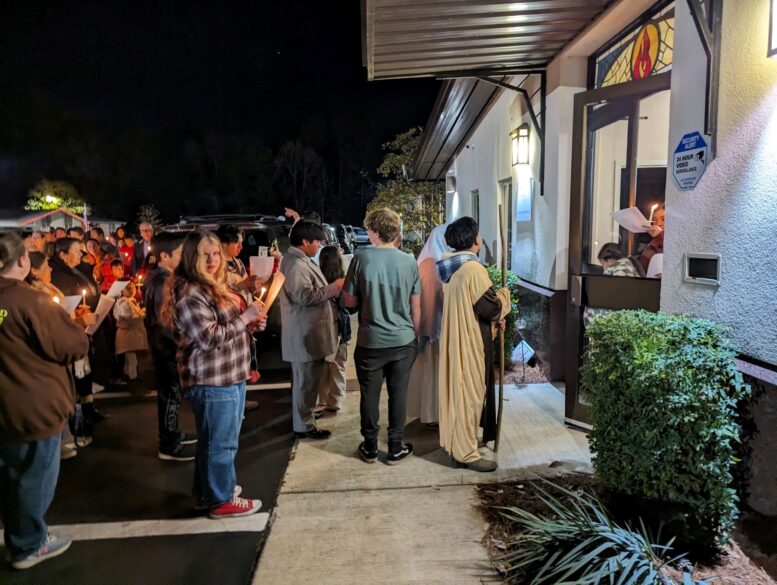
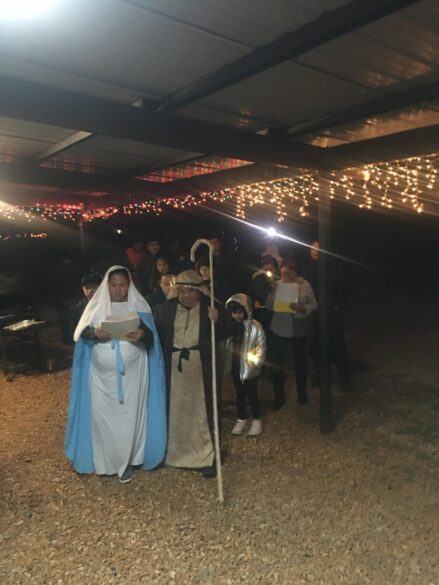

Por noches de diciembre la misma escena se repite a través del mundo Hispano, María y José piden Posada enfrente de casas de familias. PEARL — (izq.) Posada celebrada por parroquianos de St. Jude. (Foto de Lauren Roberts) PONTOTOC — (centro der.) Posadas de familias de San Cristobal. (Fotos de Aracely Nieves)
Las posadas son una procesión durante la noche, encabezada por los actores que representan a María y a José, acompañados de gente que canta Villancicos por todo el camino y sosteniendo velas.
Las posadas son hospedadas por una familia que al final abrió las puertas de su casa.
Los Peregrinos…
Mi esposa es María
Reina del cielo
Y madre va a ser
Del divino verbo
Los Hosteleros…
Eres tú José
Tu esposa es María
Entren peregrinos
No los conocía
Los Peregrinos…
Dios pague señores
Vuestra caridad
Y os colme el cielo
De felicidad
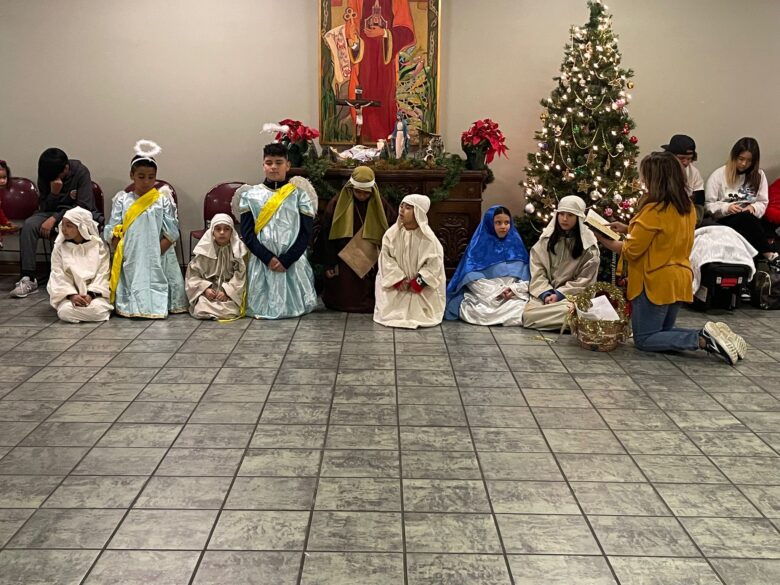
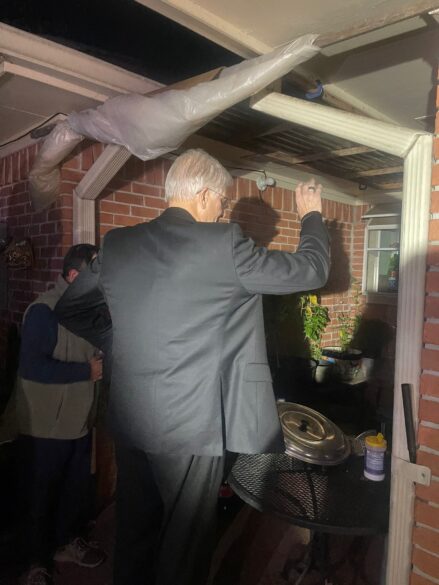
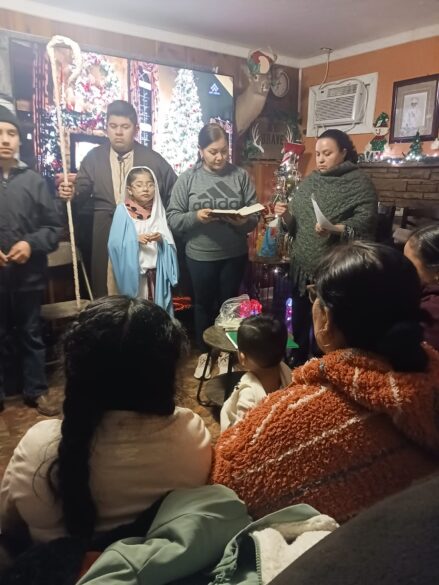
JACKSON — Durante las Posadas los niños son los principales actores. Al final de la Posada, todos entran a la casa familiar y alli continuan cantando Villancicos y generalmente las familias que los reciben les brindan algo de comer y bebidas calientes. (izq.) Hijos de los parroquianos de la Catedral de San Pedro, hicieron una representación de la escena Navideña. (centro) El Obispo Joseph Kopacz bendice la comida que una familia brindó a los parroquianos de la Catedral de San Pedro, después de una Posada. (Fotos de Lorena Urizar) PONTOTOC — (der.) Los participantes de una Posada dentro de la casa de un feligres de San Cristóbal (Foto de Aracely Nieves)
Este año durante la Posada en la Catedral de San Pedro la representación incluyó actores vestidos como regalos, árbolito navideño, refresco coca, Papá Noel, piñata, etc. para enviar el mensaje de que el centro de la temporada es Jesús y ningún otro entretenimiento.
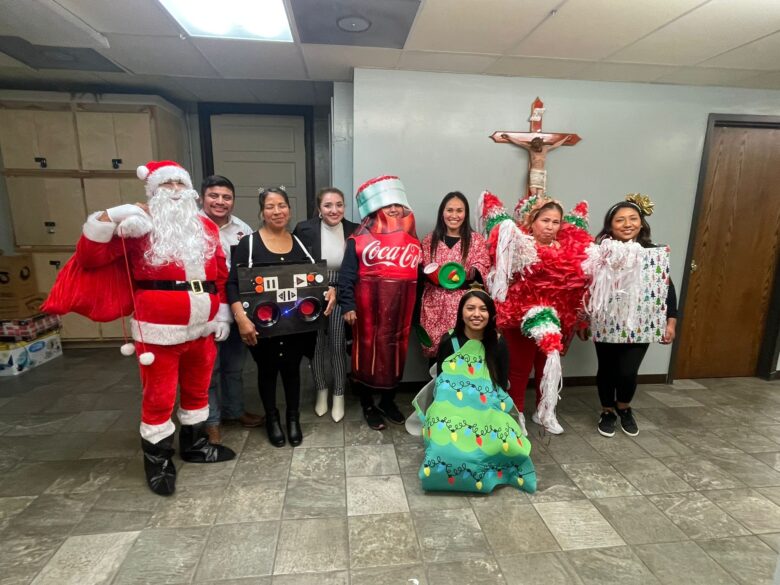
JACKSON – (arriba.) Feligreses de la Catedral de San Pedro, durante posada parroquial, dijeron que ni Santa, Regalos o Cola son centro de la Navidad (debajo i-d) Santa Claus: Wilmer Urizar, Gustavo García, Estela Vidal, Yancy Molina, Sonia Granillo, Francisca Prudencio, Josefina Gavino, Ángeles Quinteros y Nathaly Aguirre. (Fotos de Lorena Urizar)
La Vigilia de Navidad, conocida popularment como Noche Buena, es celebrada en iglesias y hogares. Es la espera del cumpleaños mas significativo para muchas generaciones. Muchos bendicen su arbolito, lo adornan con objetos signifcativos para la familia y otros aisten a Misa a las doce de la noche. En la Vigilia navideña, el Belén se llena de personas que actuan como los personajes de la historia.
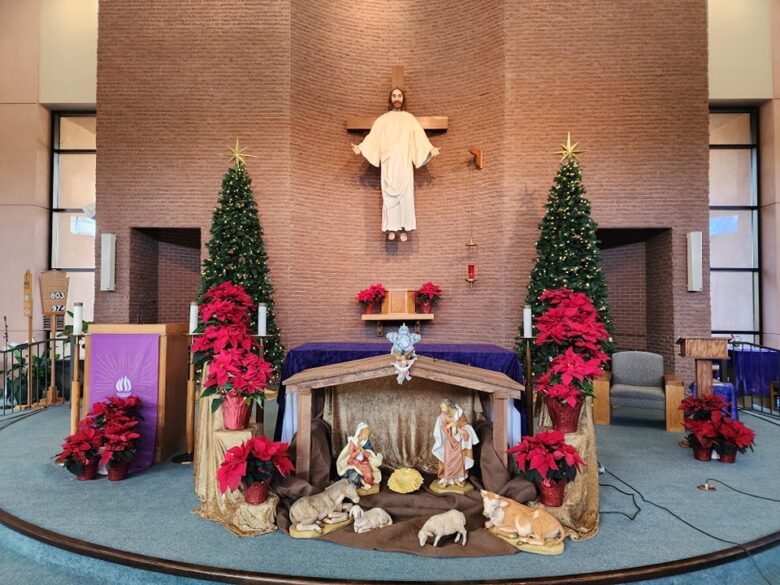

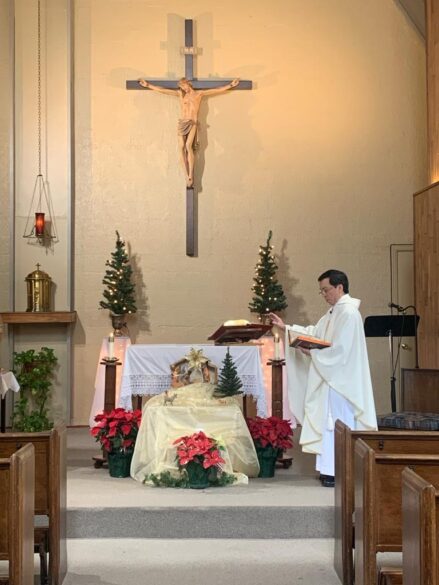
HOUSTON – (der. arriba) Niños de primera Comunion hicieron la representación del Nacimiento de Jesus en la Misa en español en la vigilia de Navidad el 24 de Diciembre, en la iglesia Inmaculado Corazón de María. Al próximo dia, 25 de dic. (arriba) el Padre Binh bendice el nacimiento durante la Misa en Inglés. (Fotos de Danna Johnson, LEM)
La Epifanía, que también se conoce popularmente como el Día de los Reyes Magos, en la mayoría de los pueblos, se celebra con un gran desfile donde tres personas actúan como los Reyes Magos, y quienes reparten dulces y regalos entre la multitud. Esta acción se replica en Iglesis y en cada casa cuando los adultos dan regalos a los niños.
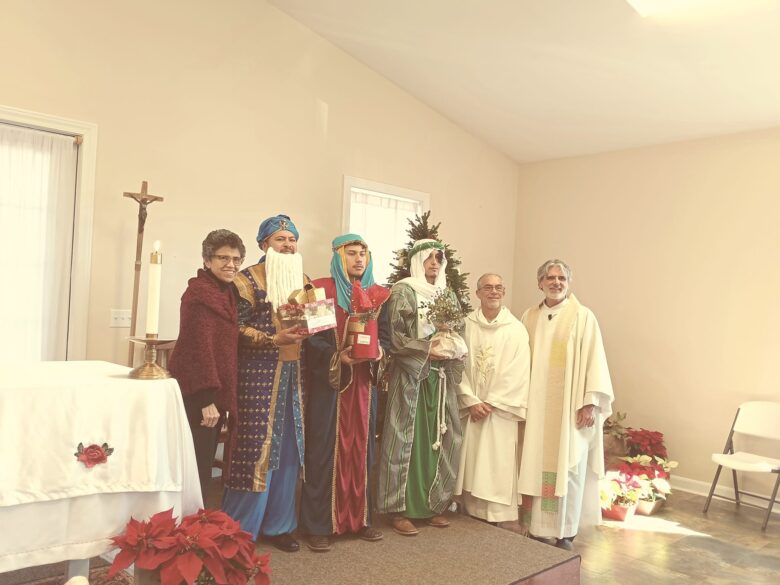


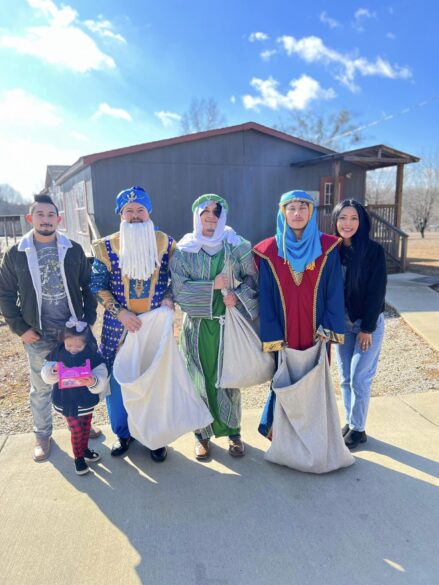
PONTOTOC – (arriba) Feligresesterminaron la temporada navideña con la celebración de la Epifanía, repartiendo regalos a los niños de las familias de San Cristobal. (Fotos de Aracely Nieves)
Five events in 2024 to help us be better Catholics
Guest Column
By Gretchen R. Crowe
As we flip the calendar to 2024, I must admit the thought of the coming 12 months fill me with a certain amount of dread. Entering into another election year, with all of the related political drama, can feel anxiety-inducing, to say the least.
Thankfully, as people of faith, we know that our hope is found not in political parties or their candidates but in Jesus Christ and his church. So, instead of dreading the first Tuesday in November and the inevitably contentious lead-up, here are five events Catholics can anticipate with joy this calendar year.
–The National Eucharistic Congress and related events
In the unlikely off-chance that you haven’t heard, the first National Eucharistic Congress in the United States in almost 50 years will be held in Indianapolis in July. The event will include nationally-recognized speakers, opportunities for worship and Eucharistic adoration, and plenty of time to deepen one’s understanding and love of the Eucharist. The organizing committee has taken several steps to make the event more affordable for families in recent months, including adding the option of purchasing day passes. Leading up to the national event will be four pilgrimages, starting from different points in the country. And parishes will continue planning and holding events as part of the National Eucharistic Revival’s parish year – events that Catholics should make every effort to participate in.
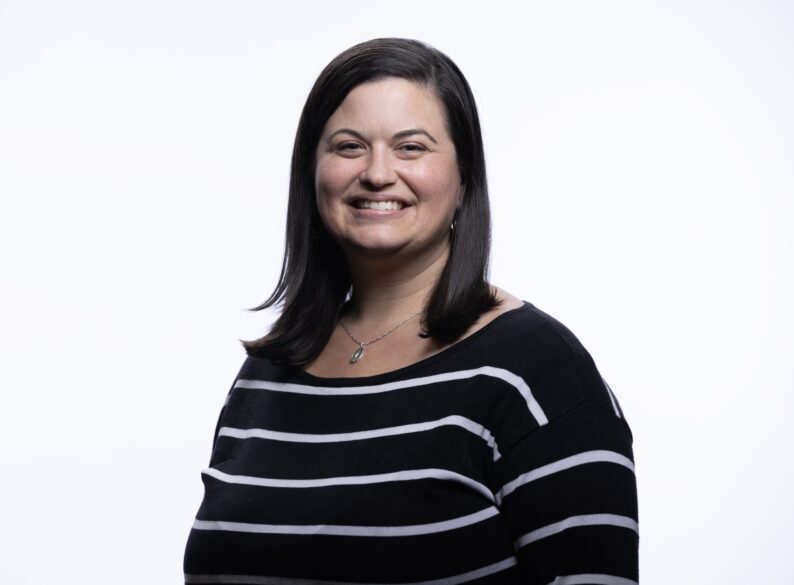
–Synod on Synodality, Part 2
In October, the second part of the two-part Synod on Synodality will take place in Rome. After round one this past October, we have more of a sense of what to expect this year. We also have a synthesis document that we can continue to digest. And we have more ideas of how we might incorporate synodality in our parish communities and in our lives in general. It’s always a good time to listen to and learn from one another, especially within the context of faith, but doing so in 2024 is particularly timely in the life of the church.
–Reopening of Notre Dame Cathedral in December
Five years ago this coming April, the world stopped in its tracks as flames devoured portions of the historic and beloved Cathedral of Notre Dame in Paris. It was an event that brought nations together in sorrow. On Dec. 8, 2024, the world once again will come together – but this time in joy for the cathedral’s scheduled reopening. “Never has anyone alive seen Notre Dame as we shall see it,” Father Olivier Ribadeau Dumas, rector-archpriest of the cathedral, told OSV News in a recent interview. It’s enough to make you want to book a flight to the City of Light to celebrate.
–10 years since sainthood
On April 27, the church will mark 10 years since the canonization of Sts. John Paul II and John XXIII. This milestone offers us the chance to pause and reflect on these two monumental figures of the 20th century. “They lived through the tragic events of that century, but they were not overwhelmed by them,” Pope Francis said at the canonization Mass. “For them, God was more powerful; faith was more powerful – faith in Jesus Christ the Redeemer of man and the Lord of history; the mercy of God, shown by those five wounds, was more powerful; and more powerful too was the closeness of Mary our Mother.” This year is the perfect time to grow in devotion to these two saints who made such an impact on the church.
–A new jubilee year
Finally, the start of the 2025 ordinary jubilee year, a time of great grace for the church, will begin on Dec. 24, 2024, with the opening of the Holy Door at St. Peter’s Basilica. Pope Francis has asked that Catholics worldwide prepare for the jubilee year by studying the documents of the Second Vatican Council, especially its four constitutions. The pope has also asked that Catholics enter into a year of preparatory prayer in 2024. To that end, forthcoming from the Dicastery for Evangelization will be an “in-depth series” called “Notes on Prayer” that will promote “the centrality of prayer, personal and communal,” according to Archbishop Rino Fisichella, pro-prefect for the dicastery.
We might be facing a contentious election season this year, but we can never forget how much we have to look forward to. May your 2024 be filled with joy.
(Gretchen R. Crowe is the editor-in-chief of OSV News.)
I remember it well
On Ordinary times
By Lucia A. Silecchia
Many years ago, I stopped at the supermarket for groceries on my way home from work. The gentleman who rang up my order said, “that will be nineteen eighty-nine, miss.” I ran my credit card through the terminal, authorizing the charge of $19.89.
It was then that the cashier said, either to himself, or to me, or to both of us, or perhaps only to God, “1989. That year …” His voice trailed off and he did not finish his thought out loud. If there had not been a lengthy line behind me, I might have stopped to ask him what it was about 1989 that crossed his mind. In retrospect, I regret that I did not – even if that would have roused the ire of other shoppers in a hurry to be on their way.
That cashier has crossed my mind from time to time since that day long ago. I have wondered what was on his mind as he thought back on that one year of his life, a year that obviously made a deep impression on him. The year 1989 may have been a good year, but the look that crossed his face led me to believe, instead, that it was a year that held sorrow in his life. I will never know. That grocery store closed years ago.
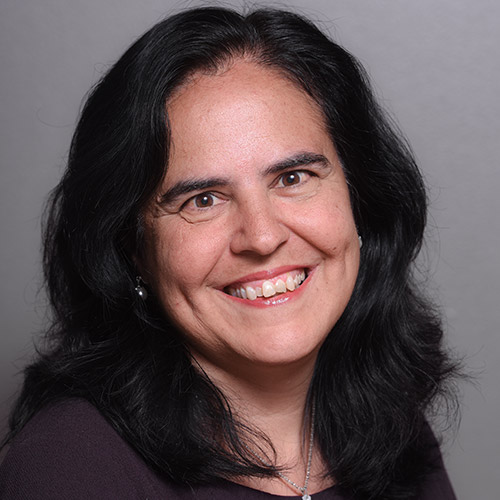
Yet, as a new year dawns I have thought of him again. All of us likely look back on certain years that have been pivotal in our own journeys through this life. Perhaps they were years of immense joy when we celebrated the births of loved ones, marriages that expanded our families, accomplishments achieved, and dreams come true. However, it is also possible – perhaps even likely – that some of the most pivotal years in our lives were those that held a measure of sorrow. Perhaps the death of a loved one, the dashing of a hope, the fading of a dream or the limitations brought on by illness made a particular year a turning point.
Now that 2024 has begun, none of us know what it will hold – for us as individuals, for those we love or for the human family. Some of us begin the year anticipating this will be a momentous year. Those whose calendars hold plans for graduations, weddings, ordinations, job changes or moves are likely to look back at 2024 as a year when life changed in a dramatic way.
Yet, at the dawn of a new year it is impossible to predict all of the unanticipated, unplanned and, yes, ordinary moments that will be less dramatic but no less profound pivot points in our lives. It is these that so often are the things that change our lives in ways we cannot yet know.
It may be a seemingly random conversation or chance encounter with a stranger that changes the course of our lives. It may be a decision to forgive another or ask forgiveness that sets a new path for a future. It may be reading a book recommended by a trusted friend or hearing a word spoken in a homily that offers insight into a truth that will shape the rest of a lifetime.
It may be in time “wasted” with the very young or the very old on a random afternoon that gives a glimpse of something we have never noticed before. It may be a glance at an explosive sunset or a sky full of stars that makes us feel small in the best possible way – and in that smallness we get our first true sense of the greatness of God.
It may be an unexpected crisis or loss that we could not foresee – a cross that breaks our heart in a way we never thought possible. And, it may be that same crisis or loss that shows us the strength a broken heart can hold and the deep kindness that dwells in the loving hearts of those who sustain us in sorrow.
When 2024 ends, many of us may look back on it with the same profound reflection as a stranger long ago pondered 1989. I hope, though, that it will not only be the big things that catch our attention this year. Often, it is those things that, at the time, seem most ordinary that leave lasting marks in our lives. So often, I have realized only in retrospect that seemingly little things have changed my life in the most unexpected and important ways.
There is something both exciting and frightening about the start of a new year with all the unknowns that lie ahead. I do not yet know if in the future I will ever say to a stranger, “2024. That year …”
But there is one thing I do know. The start of a new year is the perfect time to repeat a prayer of St. Francis de Sales that I keep in my office, so I see it every day. It pleads “Do not look forward to what may happen tomorrow; the same everlasting Father who cares for you today will take care of you tomorrow and every day.”
May God bless all that happens in the tomorrows of our ordinary times. Joyous new year!
(Lucia A. Silecchia is a Professor of Law and Associate Dean for Faculty Research at the Catholic University of America’s Columbus School of Law. Email her at silecchia@cua.edu.)
Local Knights work on Wreaths Across America project
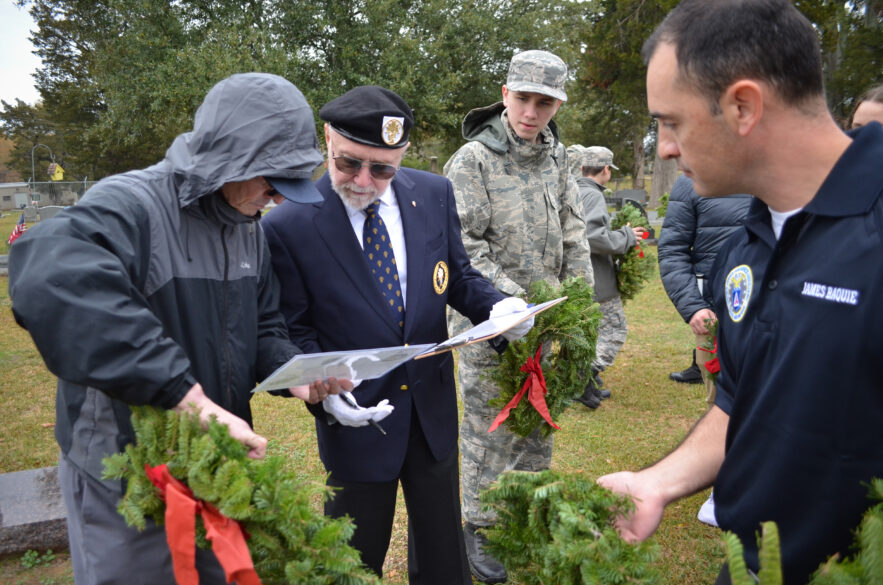
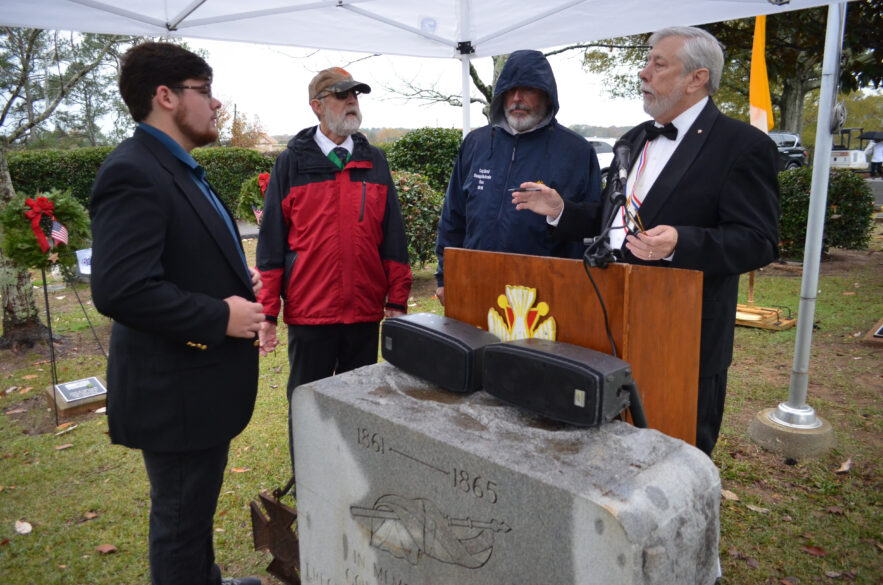
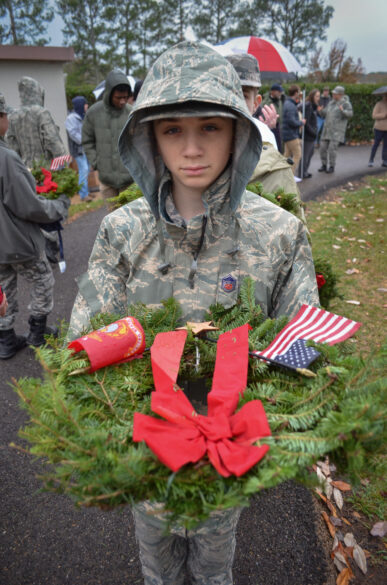

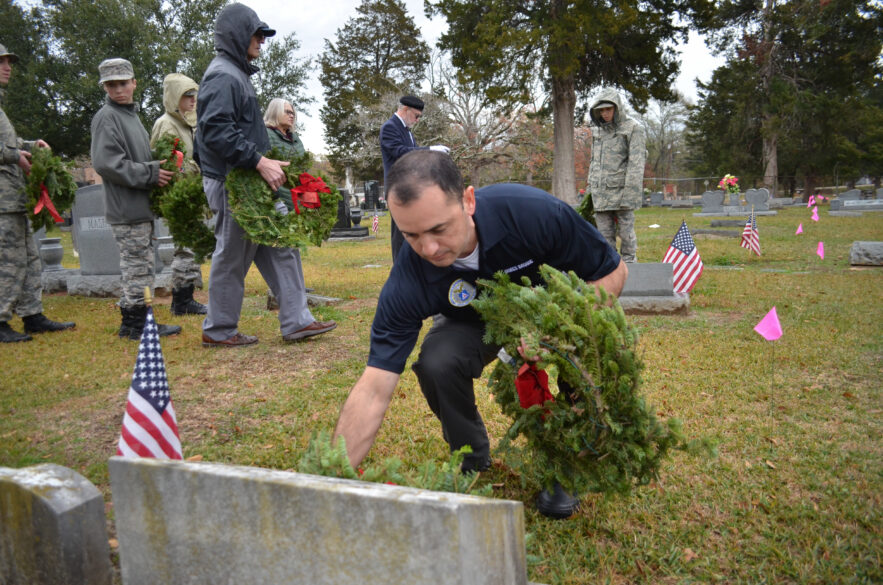
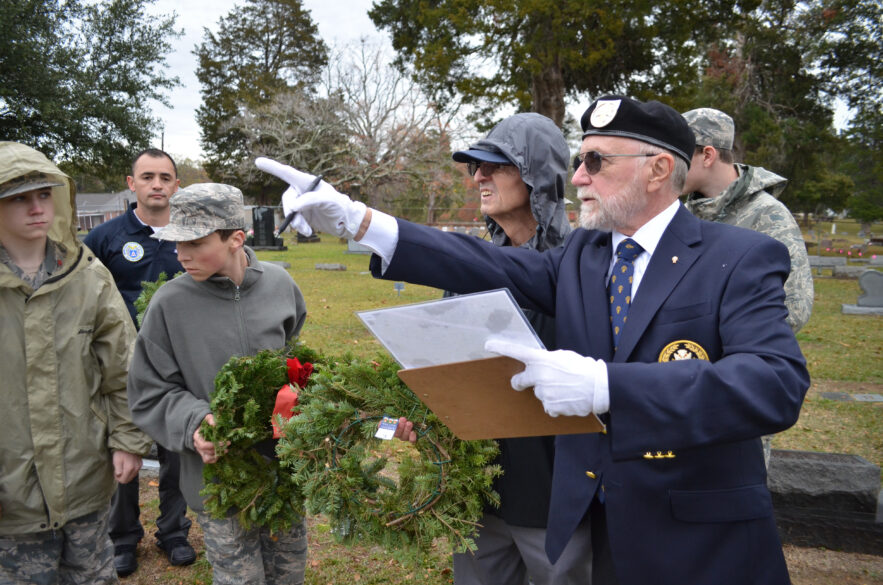

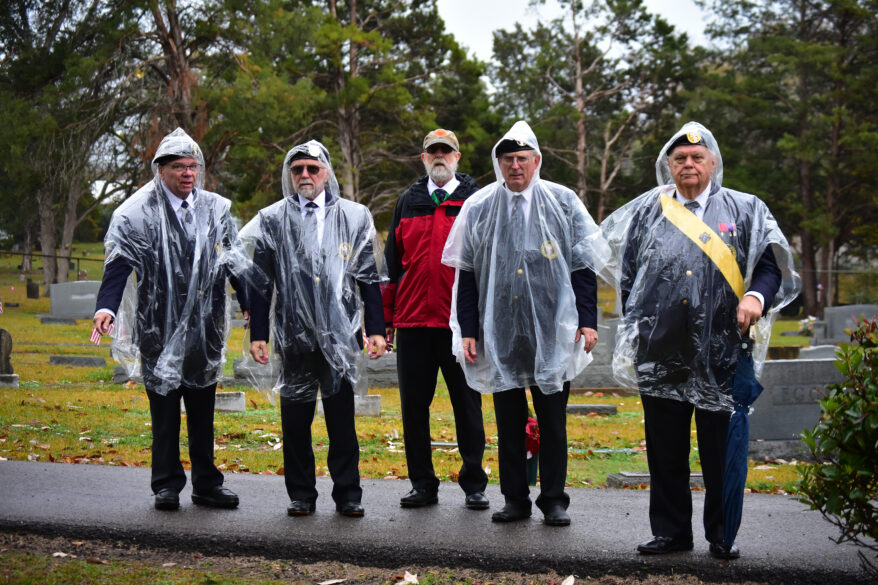

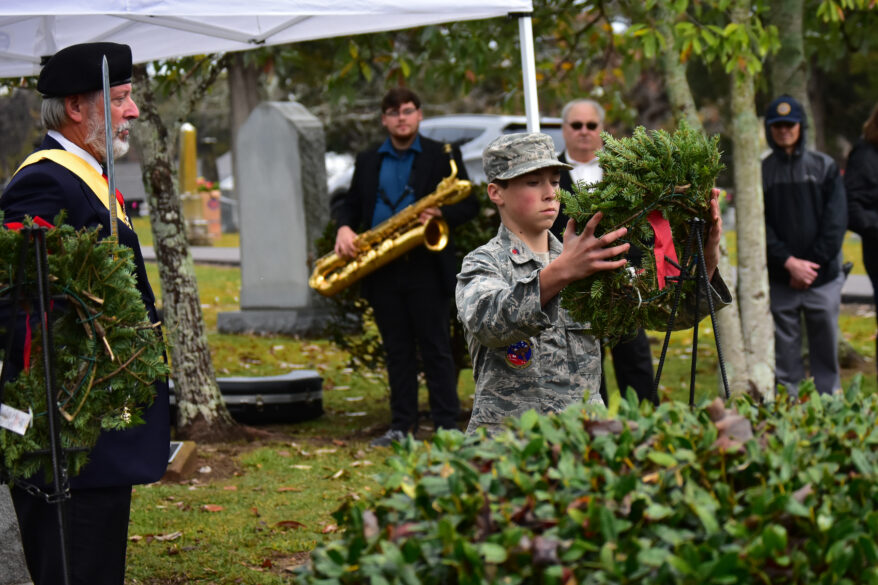
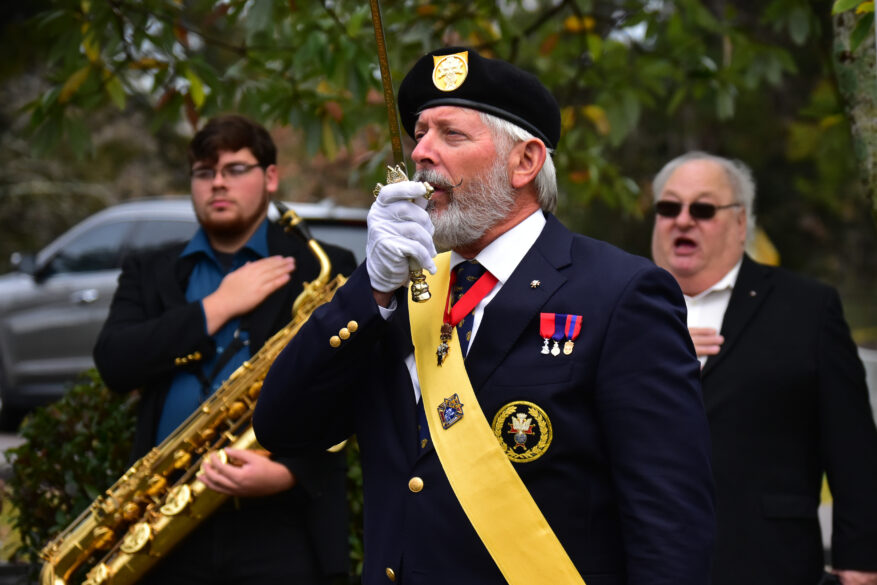
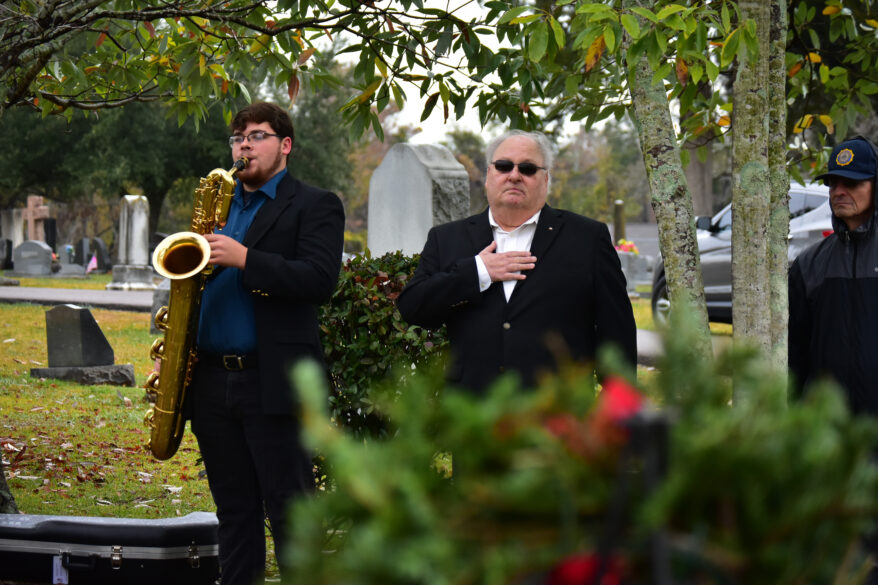
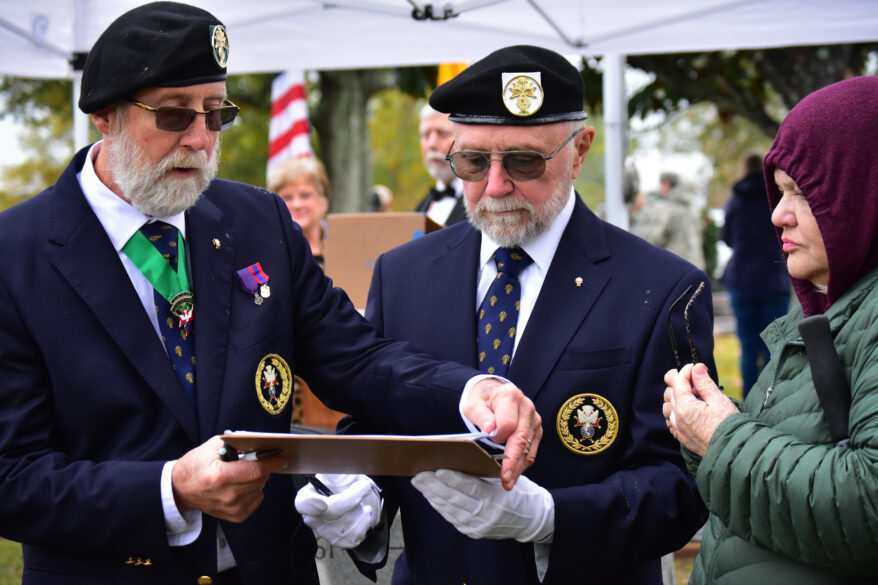
US bishops asked to hold new rounds of Synod on Synodality
By Gina Christian
(OSV News) – Dioceses across the U.S. are asked to hold additional listening sessions in the next few months, following a request from the Vatican’s Secretariat for the Synod of Bishops which is preparing for the second session of the global Synod on Synodality in October.
In a Jan. 2 letter (a copy of which OSV News has obtained), Bishop Daniel E. Flores of the Diocese of Brownsville, Texas – who chairs the U.S. bishops’ committee on doctrine and coordinates the U.S. bishops’ synod process – said his team is requesting “each diocese hold 2-3 listening sessions regarding the guiding questions” posed by the synod secretariat.
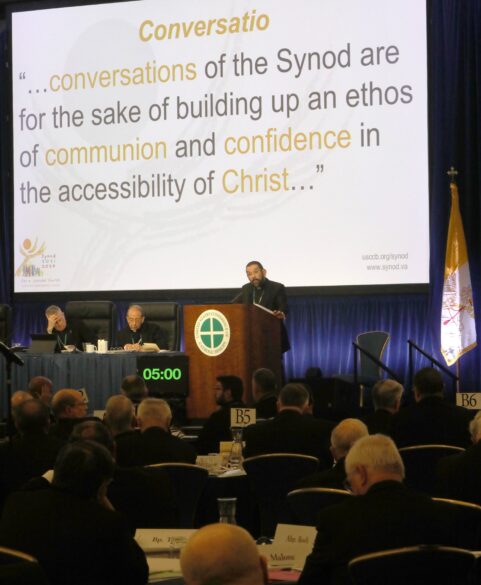
Those two guiding questions were phrased by Bishop Flores and the U.S. Conference of Catholic Bishops Synod Team as follows: “Where have I seen or experienced successes – and distresses – within the church’s structure(s)/organization/leadership/life that encourage or hinder the mission?” and “How can the structures and organization of the church help all the baptized to respond to the call to proclaim the Gospel and to live as a community of love and mercy in Christ?”
Bishop Flores asked that each diocese summarize responses to those questions in a 3-5 page document and send it to the USCCB by April 8. The diocesan summaries will inform the USCCB’s summary, which is due to the synod secretariat in May.
Bishop Flores noted that in addition to the listening sessions, “we are encouraged to continue ongoing engagement with the People of God in the dynamism of a synodal style.”
To that end, dioceses may also include with their submissions “a two-page testimony of best practices for synodality” they have developed, the bishop explained.
Bishop Flores also wrote that in addition to the diocesan consultations taking place, “the USCCB will be holding additional listening sessions at the national level with a focus on participation, social justice, and vocations.”
Diocesan-level synod leaders “will be invited to participate in a national working group with the permission of the bishop,” he said in his letter.
Bishop Flores said that “we all know time is short, but even modest efforts at the local level can bear much fruit.
“Let us do what we can, as well as we can and trust the Lord to accomplish beyond what we can foresee,” he wrote.
Launched by Pope Francis in October 2021, the first session of the 16th Ordinary General Assembly of the Synod of Bishops, organized on the theme “For a Synodal Church: Communion, Participation, Mission,” took place Oct. 4-29, 2023, in Rome.
The first session of the synod, also known as the “Synod on Synodality,” was summarized in a 41-page report intended to allow the global church to digest, reflect on and give feedback on its contents ahead of the synod’s final session in Rome next October.
Part of that task is figuring out how decisions are made in the church in a way that is faithful to its nature – including discerning how episcopal collegiality is exercised in a synodal church – because the church’s members have “differentiated co-responsibility for the common mission of evangelization.”
The synod’s report also covers topics such as evangelization as a mandate of baptism, formation in “authentic discipleship” rooted in the Eucharist and Scripture, clerical and lay formation, ministries of pastoral accompaniment, the role of the Eastern Catholic churches in the life of the universal church, ecumenism, ordaining married men to the priesthood, the role of women in the church and the ongoing impact of clerical sex abuse scandals among others.
The synod’s next session in Rome will have the task of making decisions about what concrete proposals to present before the pope.
(Gina Christian is a national reporter for OSV News. Peter Jesserer Smith, national news and features editor of OSV News, contributed to this report.)
Briefs
NATION
MOBILE, Ala. (OSV News) – An Alabama Catholic priest known for talking about demonology and exorcism has now been fully returned to the lay state months after he fled the country with a recent Catholic high school graduate. The Archdiocese of Mobile announced in a Jan. 5 statement that it had “received notice that the laicization of Alex Crow is complete, effective immediately” in a decision confirmed by Pope Francis. The archdiocese said Crow initiated the process and “this decision of Pope Francis is final. There is no appeal.” On Nov. 20, the former priest civilly married Taylor Victoria Harrison, 18, a June 2023 graduate of McGill-Toolen Catholic High School with whom he had traveled to Italy in July 2023 after abruptly leaving his assignment as a parochial vicar at Corpus Christi Parish in Mobile, Alabama. Harrison turned 18 in June prior to travel, but her family repeatedly expressed grave concerns their daughter had been groomed by Crow, 30, while she was a minor as he provided pastoral ministry to students. Crow handwrote her a Valentine’s Day love letter where he described himself to the minor (at the time) as “married” to her and indicated plans for the pair to be in Italy together “with our family.” Mobile Archbishop Thomas J. Rodi had suspended Crow’s priestly faculties in late July, ordering him not to present himself as a priest, and in a Jan. 5 statement thanked Pope Francis for his decision.
TUCKAHOE, N.Y. (OSV News) – A beloved Italian saint is speaking to the faithful anew through a series of letters sent directly to their email inboxes. The Saint Pio Foundation has announced the release of “Epistolary,” a collection of 365 letters written by Padre (“Father”) Pio to his spiritual directors and students. A dedicated page on the foundation’s website includes a sign-up form (available at https://www.saintpiofoundation.org/saint-pios-epistolary) for receiving a weekly PFY with seven letters, one for each day of a given week. The first batch of letters was sent out Jan. 1 by the Tuckahoe, New York-based foundation. Freshly translated into English from the original Italian, the Epistolary represents a fraction of the “thousands and thousands of letters” Padre Pio wrote during his lifetime, Luciano Lamonarca, founder and CEO of the Saint Pio Foundation, told OSV News. Lamonarca said the Epistolary is one of several “gifts” he wanted to give to the Catholic community to mark the foundation’s upcoming 10th anniversary in April. But the gifts he has received from his own devotion to the saint have been life-changing, he added, noting that he and his wife Valentina credit the 2015 birth of their son Sebastian – after losing several children to stillbirth and miscarriages – to the saint’s intercession. Lamonarca told OSV News that Padre Pio’s spiritual wisdom is summarized in one of the saint’s best-known maxims: pray, hope and don’t worry. “He releases his fear, he releases everything (into) God’s grace.”
ST. PAUL, Minn. (OSV News) – A multiyear investigation overseen by the Catholic Church into Archbishop John C. Nienstedt, who resigned from the Archdiocese of St. Paul and Minneapolis, has ended with the Vatican finding he acted “imprudently” in several instances but not criminally under canon law, Archbishop Bernard A. Hebda said in a statement Jan. 5. “None of those instances, either standing alone or taken together, were determined to warrant any further investigation or penal sanctions,” Archbishop Hebda said, but Pope Francis determined several administrative actions “are justified.” Among them, Archbishop Nienstedt “may not exercise any public ministries” in the “Province of St. Paul and Minneapolis,” which covers Minnesota, North Dakota and South Dakota; “may not reside in the Province of St. Paul and Minneapolis”; and “may not exercise ministry in any way outside of his diocese of residence” without permission of the local bishop. Archbishop Nienstedt resigned after criminal and civil charges were brought against the archdiocese in June 2015 for failing to protect children from a former pastor convicted of sexually abusing three minors in his parish. The civil and criminal charges against the archdiocese were dismissed in 2015 and 2016, respectively. In a response to the findings, Archbishop Nienstedt, who lives in Michigan, said he resigned to give the archdiocese “a new beginning” and he has asked the Holy See to clarify the “imprudent” actions he allegedly committed.
VATICAN
VATICAN CITY (CNS) – Giving to others in need is not enough; people must look those they help in the eyes and be willing to touch their poverty with their hands and hearts, Pope Francis said. Meeting Jan. 5 with members of the Unicoop supermarket cooperative, which is based in Florence, Italy, the pope said Christians must “be close to the people we help.” When hearing confessions, he said, he asks people if they give to the poor, to which people often answer “yes.” The pope said he asks in reply: “And tell me, when you give to the poor, do you look in the eyes of the person, touch their hand, or throw the money there?” He told the group, “Touch, touch poverty, touch,” encouraging them to develop “a heart that touches, to look and to understand.”
VATICAN CITY (CNS) – Pope Francis expressed his condolences and prayers after two bombings in Kerman, Iran, claimed the lives of 84 people and wounded scores more at a memorial for an assassinated Iranian military officer. In a telegram sent on behalf of the pope Jan. 5, Cardinal Pietro Parolin, Vatican secretary of state, said the pope “was deeply saddened to learn of the loss of life caused by the recent explosions in Kerman.” “He sends the assurance of his prayers for those who have died and for their grieving families” and expressed “his spiritual solidarity with the injured,” the telegram said. The pope also “invokes upon all the people of Iran, the Almighty’s blessing of wisdom and peace,” it said. The Islamic State claimed responsibility for the Jan. 3 attack in southern Iran, saying it was caused by two of its members wearing and detonating explosives. The blasts went off outside a cemetery where thousands had gathered for the anniversary of the assassination of Qasem Soleimani in 2020. Soleimani, whose militia force had fought against the Islamic State in Iraq, had been killed in Iraq in 2020 by a U.S. drone strike.
WORLD
SOKOTO, Nigeria (OSV News) – Gov. Caleb Mutfwang of Nigeria’s Plateau state declared a week of mourning Jan. 1-8 to honor the deaths of at least 200 Christians killed over Christmas by Fulani Muslim herders, targeting Christians in the country. Bishop Matthew Hassan Kukah of Sokoto said the attackers are “children of darkness” and come “from the deepest pit of hell.” The Dec. 23-28 killings also have led to thousands of people being forced to flee their homes. As many as 80 villages in Plateau state were attacked, Christian aid group Release International reported Dec. 30. Bodies continue to be discovered, and attacks are expected to continue, Release International reported. “I urge all citizens to use these days for intense prayers to seek the intervention of the almighty God in defending our territories against wicked men that have risen against us,” Mutfwang said in a video statement released Jan. 2. In a three-page New Year’s message, called “Blood and crucifixion on the Plateau,” a copy of which OSV News obtained, Bishop Kukah strongly condemned the killers as “sons of Satan” who “came to the Plateau again, bearing their gifts of death and destruction.” he said. The Fulani herders “came from the deepest pit of hell” and snatched “the light of the joy of Christmas from thousands of people on the Plateau.”
SANTIAGO DE COMPOSTELA, Spain (OSV News) – U.S. pilgrims made up the largest international group walking the famous Camino to Santiago de Compostela, Spain, in 2023. The Way of St. James welcomed over 32,000 American visitors in a record year for the ancient pilgrimage site. Interest in the Camino de Santiago – a network of pilgrim routes across Europe that lead to the Tomb of Saint James – is greater than ever, with the worldwide number of pilgrims walking the site approaching half a million. Not everyone, however, walks because of religious reasons. According to the statistics published by the pilgrims’ office, 446,035 pilgrims from all over the world arrived in the City of the Apostles last year. With 44% of the pilgrims (almost 200,000) being Spanish, Americans were the most common international visitors (32,063), followed by Italians (28,645) and Germans (24,342). The Portuguese, French, British, Mexicans, South Koreans and Irish were also represented in the top ten, followed by pilgrims from destinations as far as Australia, Brazil and Canada. According to the Pilgrims’ Bureau, 42.6% of arrivals cited “religious reasons,” 4.7% cited “religious and other reasons” in the latest statistics and 22.7% were walking for “non-religious reasons.”
MEXICO CITY (OSV News) – The U.S. Department of State has demanded the release of Bishop Rolando Álvarez of Matagalpa and other imprisoned Nicaraguan religious leaders following a wave of detentions targeting Catholic clergy over the Christmas season. The Jan. 2 statement described Bishop Álvarez and the other religious leaders – including Bishop Isidoro Mora of Siuna – as “unjustly detained” and deplored the conditions in which they were being held. Bishop Álvarez has been detained for more than 500 days, it noted. “Nicaraguan authorities have kept Bishop Álvarez in isolation, blocked independent evaluation of the conditions of his imprisonment, and released staged videos and photographs that only increase concerns about his well-being,” read the statement, signed by State Department spokesperson Matthew Miller. The regime of President Daniel Ortega and his wife, Vice President Rosario Murillo, “continues to impose severe restrictions on religious communities and deny Nicaraguan citizens the ability to freely practice their religions and express their beliefs. We once again call on the Nicaraguan government to release Bishop Rolando Álvarez immediately and without conditions.” In a separate post on social media platform X, formerly Twitter, Miller called Bishop Álvarez’s detention “unconscionable,” adding, “Freedom of belief is a human right.” On Dec. 31, Cardinal Leopoldo Brenes of Managua urged prayer for the “families and communities that at this moment feel the absence of their priests or are experiencing other types of pain.”
Turning to Our Lady of Guadalupe with love, hope saved her life, singer says
By Theresa Cisneros
LOS ANGELES (OSV News) – Five years ago, Rosy Oros lay comatose in a hospital bed in Mexico – some 1,500 miles away from home – after experiencing complications from a medical procedure that had taken a drastic toll on her body and mind.
She was suffering internal and external bleeding, her organs were damaged, and doctors gave her only a 2% chance of surviving.
As she lay there on the brink of death, she finally opened her eyes and – in a haze – saw a familiar set of brown eyes gazing back at her, lovingly, that were very much still alive.
Those eyes belonged to an image of Our Lady of Guadalupe hanging just a few feet away, at once filling her heart with love and hope that the Virgin Mary she’d held dear since childhood would intercede with Jesus to help her make it out of the clinic alive.
Oros’ healing journey came full circle this December as she and other musicians sang hymns of praise and thanksgiving to Our Lady of Guadalupe during the annual “Las Mañanitas” celebration at the Cathedral of Our Lady of the Angels in honor of her feast day.
“I am so humbled and blessed to be able to stand there and in my own simple way give thanks to the Virgin,” Oros told Angelus, the online news outlet of the Archdiocese of Los Angeles. “It may seem insignificant but I know that she is receiving it with a lot of love and that it makes her happy, because she knows my heart.”
At the Cathedral of Our Lady of the Angels, the festivities ran from the evening of Dec. 11 into the early hours of Guadalupe’s feast day, Dec. 12.
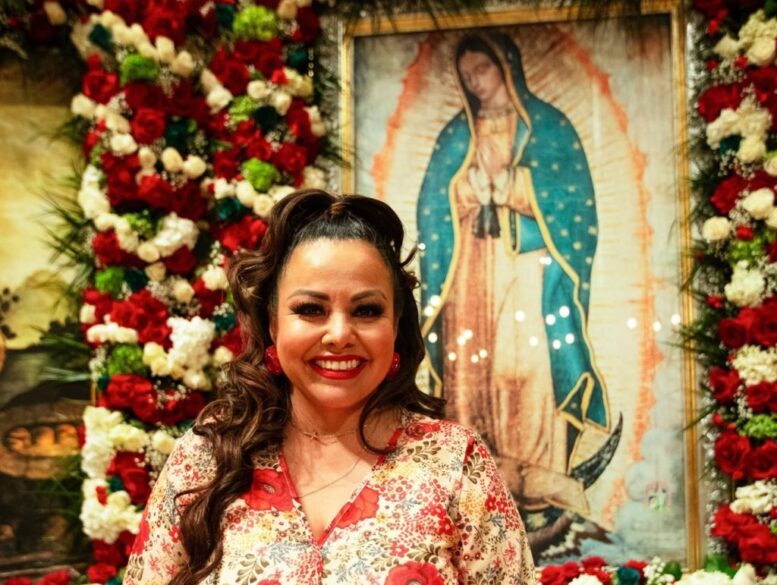
As in years past, the celebration featured Aztec and Ballet Folklorico dancers, veneration of the only relic of St. Juan Diego’s “tilma” in the U.S., the rosary, a musical tribute that included “Las Mañanitas,” and ended with midnight Mass, where Archbishop José H. Gomez of Los Angeles said the Guadalupe story is a reminder that “Jesus Christ loves us so much that he came to share our hopes and dreams and to offer his life for us.”
“Just as she did with Juan Diego, the most holy Mary entrusts each of us with a task. She has a message that she needs us to spread and she is sending us to tell the whole world about Jesus.” he said.
Oros aimed to do just that as she and six other guest singers delivered individual serenades to the Virgin backed by Mariachi Garibaldi de Jaime Cuellar.
Oros carefully made her way onto the altar, set down a bouquet of red roses near two giant images of Our Lady of Guadalupe and St. Juan Diego bedecked with hundreds of flowers, and sang two songs to the Virgin while looking deep into the compassionate eyes that she’s come to know so well.
It was a moment that she had trained for all her life.
Oros was born in Aguascalientes, Mexico, into a family of nine that is both musically inclined and devoutly Catholic; one of her brothers spent six years in the seminary, while another is currently a Jesuit novice. She immigrated to Santa Maria in California as a preteen, and studied music theory and vocalization, singing to God and to Our Lady of Guadalupe.
At 12, she discovered a love for Mexican “ranchera” music when her father bought her a copy of Linda Ronstadt’s 1987 album “Canciones De Mi Padre” – in which the American singer recorded traditional mariachi songs that were of special significance to her family.
“I would lock myself in my room and listen to the cassette over and over and over again until I learned all the songs,” she said.
Since then, Oros has remained close to the singing world. She’s enjoyed a long career working in TV, radio, the recording industry and now in publishing as editor-in-chief of Iconos, her own magazine highlighting music and entertainment news.
While she’s remained mostly behind the scenes, she has recorded jingles, produced her own albums and sings when the occasion arises. While living in New York, she had the chance to sing on the “Late Show with David Letterman,” for fashion designer Oscar de la Renta and open for Mexican “ranchera” icon Vicente Fernández at Madison Square Garden.
Oros accepted the chance to sing during this year’s “Mañanitas” celebration at the cathedral, out of gratitude for the role she said Our Lady played in saving her life just five years ago.
In 2018, Oros went into septic shock, and then fell into a coma, after undergoing a medical procedure in Aguascalientes. After awakening, she suffered a cerebral thrombosis and other complications that worsened her prognosis.
Drifting in and out of consciousness, she spent the early days of her recovery in a clinic named, aptly, for Our Lady of Guadalupe, where she said she experienced the love of Jesus for her through Mary.
A pivotal point in her healing, she said, came when she and her husband received messages from Mary through a prayer group.
“She said, ‘I am with you, do not be afraid,’” Oros said. “’You will heal from this but we will do this together …’ In other words, she wanted me to get closer to her Son while holding her by the hand.”
Today, Oros’ body and faith have grown continually stronger.
“She interceded for me to live,” she said. “We always look for the opportunity to thank her and to be in communion with her.”
Surviving the near-fatal incident has shown Oros that Our Lady of Guadalupe is very much alive and is there to help all of her children, she said.
“We may not be perfect, we may be sinners, we may fall, but in the end this is proof of the love and mercy of Christ through his mother. She is the key to the door that opens to Christ and to our salvation.”
(Theresa Cisneros writes for Angelus, the online news outlet of the Archdiocese of Los Angeles.)
